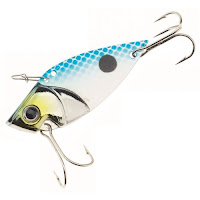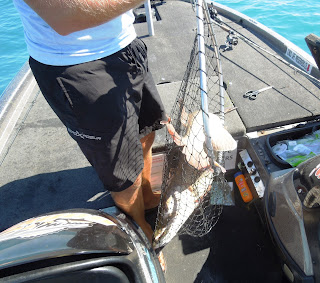
The Meerbar in Dusseldorf is known for good food, good service and a fairly extensive wine list. My plan was oysters, pumpkin crème soup and yellow fin tuna medium rare. I needed a wine. I entrusted the selection to my friend and business colleague Florian Schrey. Like me, Florian appreciates a full bodied red wine having also spent a lot of time in Cape Town. He asked me if a Montepulciano would work, to which I said “perfect”.

To be labeled as a Vino Nobile di Montepulciano, a wine must come from vineyards on the hills which surround Montepulciano. This area is made up of slopes between 1000 and 2000 ft. in altitude. The key variety grown here is Sangiovese, the same variety used to make another great Tuscan red, Brunello di Montalcino. Sangiovese grapes must make up no less than 60 and no more than 80 percent of the final wine. The aging period for any Vino Nobile di Montepulciano is a minimum of 24 months of which at least 12 months must be spent in oak barrels, which are used not as much for flavor as for the slow, controlled maturation they provide.

Florian selected Poliziano’s Vino Nobile Di Montepulciano 2011- a wine I found to be true to its Tuscan roots and one that has had quite a bit of critical acclaim including a Rating of 90 from Wine Spectator. From the first sip I realized this was no ordinary Italian red but truly an Italian classic. The Poliziano vineyards are located in the hills surrounding Montepulciano, a picturesque town 25 miles southeast of Siena. Wine making in this region dates back to Etruscan times. By the 15th century, the local wine had become a favorite of the Tuscan aristocracy. Popes and secular leaders in the 16th and 17th centuries referred to the win of Montepulciano as "the King of all Wines". It is even called out by name by Voltaire in his book Candide. Travelers through the region sometimes referred the town’s Vino Nobile as Chianti- perhaps because it has been described as having the bouquet of Chianti Classico with the richness of Brunello di Montalcino. Both wines should be honored by the comparison.

Vino Nobile di Montepulciano is usually maroon-red in color and sometimes takes on a subtle brick- orange tint over time. It is characterized by its dark cherry and rich plum aromas, ripe strawberry and cherry fruit flavors, and the firm tannins, and acidity makes it an age-worthy wine, the best of which will improve gracefully anywhere from 10 to 20 years.


The Poliziano wine estate, owned by Federico Carletti, was founded in 1961 from an original nucleus of 22 hectares, and now reaching 200 hectares. The varietals have been chosen with the sole objective of producing grapes of premium quality. All the wines are made only from estate-grown grapes with a focus on fewer labels and wines which are highly representative of their category which customers can easily recognize and enjoy. Poliziano’s 2011 take on Vino Nobile Di Montepulciano has a dark-opaque ruby coloring, and elegant aromas of dark red fruit which are definitely evident in the cherry, raspberry, black pepper and spicy-earthy flavors. This wine goes well with grilled red meat and game (does tuna steak qualify?), roast chicken and an antipasto of salami, ham and aged cheese. For me the wine accompanied all courses well due in part to the earthy spice accents. It is suggested that this wine is best enjoyed from 2015 through 2020.
 The Meerbar in Dusseldorf is known for good food, good service and a fairly extensive wine list. My plan was oysters, pumpkin crème soup and yellow fin tuna medium rare. I needed a wine. I entrusted the selection to my friend and business colleague Florian Schrey. Like me, Florian appreciates a full bodied red wine having also spent a lot of time in Cape Town. He asked me if a Montepulciano would work, to which I said “perfect”.
The Meerbar in Dusseldorf is known for good food, good service and a fairly extensive wine list. My plan was oysters, pumpkin crème soup and yellow fin tuna medium rare. I needed a wine. I entrusted the selection to my friend and business colleague Florian Schrey. Like me, Florian appreciates a full bodied red wine having also spent a lot of time in Cape Town. He asked me if a Montepulciano would work, to which I said “perfect”. To be labeled as a Vino Nobile di Montepulciano, a wine must come from vineyards on the hills which surround Montepulciano. This area is made up of slopes between 1000 and 2000 ft. in altitude. The key variety grown here is Sangiovese, the same variety used to make another great Tuscan red, Brunello di Montalcino. Sangiovese grapes must make up no less than 60 and no more than 80 percent of the final wine. The aging period for any Vino Nobile di Montepulciano is a minimum of 24 months of which at least 12 months must be spent in oak barrels, which are used not as much for flavor as for the slow, controlled maturation they provide.
To be labeled as a Vino Nobile di Montepulciano, a wine must come from vineyards on the hills which surround Montepulciano. This area is made up of slopes between 1000 and 2000 ft. in altitude. The key variety grown here is Sangiovese, the same variety used to make another great Tuscan red, Brunello di Montalcino. Sangiovese grapes must make up no less than 60 and no more than 80 percent of the final wine. The aging period for any Vino Nobile di Montepulciano is a minimum of 24 months of which at least 12 months must be spent in oak barrels, which are used not as much for flavor as for the slow, controlled maturation they provide. Florian selected Poliziano’s Vino Nobile Di Montepulciano 2011- a wine I found to be true to its Tuscan roots and one that has had quite a bit of critical acclaim including a Rating of 90 from Wine Spectator. From the first sip I realized this was no ordinary Italian red but truly an Italian classic. The Poliziano vineyards are located in the hills surrounding Montepulciano, a picturesque town 25 miles southeast of Siena. Wine making in this region dates back to Etruscan times. By the 15th century, the local wine had become a favorite of the Tuscan aristocracy. Popes and secular leaders in the 16th and 17th centuries referred to the win of Montepulciano as "the King of all Wines". It is even called out by name by Voltaire in his book Candide. Travelers through the region sometimes referred the town’s Vino Nobile as Chianti- perhaps because it has been described as having the bouquet of Chianti Classico with the richness of Brunello di Montalcino. Both wines should be honored by the comparison.
Florian selected Poliziano’s Vino Nobile Di Montepulciano 2011- a wine I found to be true to its Tuscan roots and one that has had quite a bit of critical acclaim including a Rating of 90 from Wine Spectator. From the first sip I realized this was no ordinary Italian red but truly an Italian classic. The Poliziano vineyards are located in the hills surrounding Montepulciano, a picturesque town 25 miles southeast of Siena. Wine making in this region dates back to Etruscan times. By the 15th century, the local wine had become a favorite of the Tuscan aristocracy. Popes and secular leaders in the 16th and 17th centuries referred to the win of Montepulciano as "the King of all Wines". It is even called out by name by Voltaire in his book Candide. Travelers through the region sometimes referred the town’s Vino Nobile as Chianti- perhaps because it has been described as having the bouquet of Chianti Classico with the richness of Brunello di Montalcino. Both wines should be honored by the comparison.  Vino Nobile di Montepulciano is usually maroon-red in color and sometimes takes on a subtle brick- orange tint over time. It is characterized by its dark cherry and rich plum aromas, ripe strawberry and cherry fruit flavors, and the firm tannins, and acidity makes it an age-worthy wine, the best of which will improve gracefully anywhere from 10 to 20 years.
Vino Nobile di Montepulciano is usually maroon-red in color and sometimes takes on a subtle brick- orange tint over time. It is characterized by its dark cherry and rich plum aromas, ripe strawberry and cherry fruit flavors, and the firm tannins, and acidity makes it an age-worthy wine, the best of which will improve gracefully anywhere from 10 to 20 years.
 The Poliziano wine estate, owned by Federico Carletti, was founded in 1961 from an original nucleus of 22 hectares, and now reaching 200 hectares. The varietals have been chosen with the sole objective of producing grapes of premium quality. All the wines are made only from estate-grown grapes with a focus on fewer labels and wines which are highly representative of their category which customers can easily recognize and enjoy. Poliziano’s 2011 take on Vino Nobile Di Montepulciano has a dark-opaque ruby coloring, and elegant aromas of dark red fruit which are definitely evident in the cherry, raspberry, black pepper and spicy-earthy flavors. This wine goes well with grilled red meat and game (does tuna steak qualify?), roast chicken and an antipasto of salami, ham and aged cheese. For me the wine accompanied all courses well due in part to the earthy spice accents. It is suggested that this wine is best enjoyed from 2015 through 2020.
The Poliziano wine estate, owned by Federico Carletti, was founded in 1961 from an original nucleus of 22 hectares, and now reaching 200 hectares. The varietals have been chosen with the sole objective of producing grapes of premium quality. All the wines are made only from estate-grown grapes with a focus on fewer labels and wines which are highly representative of their category which customers can easily recognize and enjoy. Poliziano’s 2011 take on Vino Nobile Di Montepulciano has a dark-opaque ruby coloring, and elegant aromas of dark red fruit which are definitely evident in the cherry, raspberry, black pepper and spicy-earthy flavors. This wine goes well with grilled red meat and game (does tuna steak qualify?), roast chicken and an antipasto of salami, ham and aged cheese. For me the wine accompanied all courses well due in part to the earthy spice accents. It is suggested that this wine is best enjoyed from 2015 through 2020.





















































